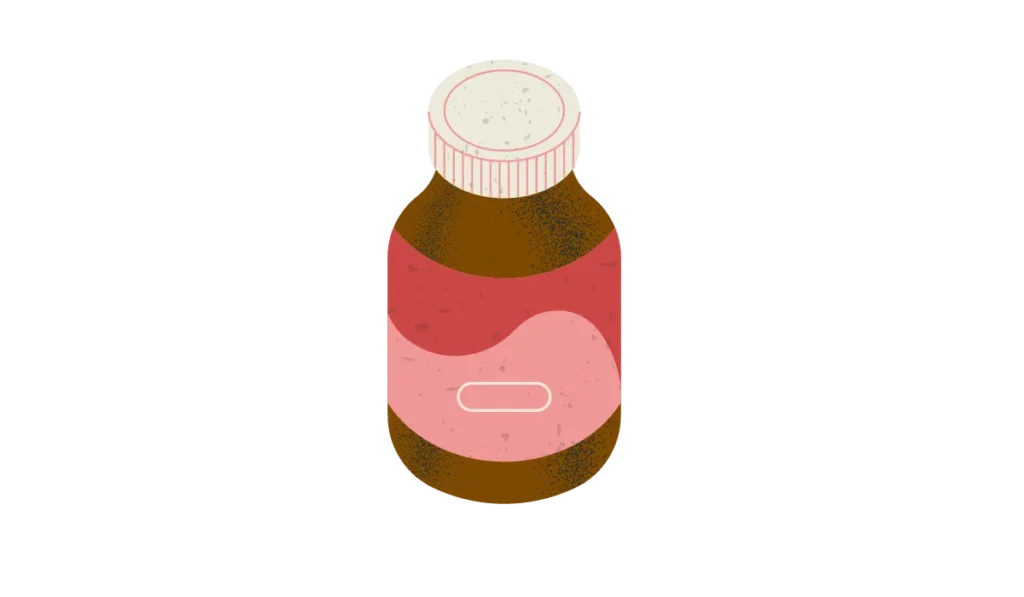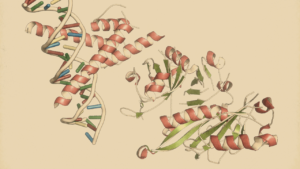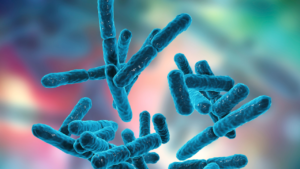Exploring the Link: Gut Microbiota and Back Pain Connection
Discover how gut microbiota and back pain are connected. Learn about the latest research in this intriguing health field and find relief.”

The article delves into the intriguing connection between gut microbiota and back pain, particularly in the context of obesity.
It explores how chronic low-grade inflammation associated with obesity might be influenced by gut bacteria, such as Adlercreutzia, and how this could relate to back pain.
The study examines the interplay between BMI, serum adipsin, leptin levels, and the composition of gut microbiota in individuals suffering from back pain.
By focusing on the role of specific gut bacteria in chronic pain, the article sheds light on potential new pathways for treating back pain, especially in obese individuals, highlighting the complexity and potential of gut microbiota as a factor in this common ailment.

In This Article:
Key Points
- Study Objective and Methodology: The study aimed to explore if variations in gut microbiota composition correlate with the incidence of back pain. It utilized baseline data from 65 overweight or obese non-diabetic participants, focusing on 36 who provided stool samples for gut microbiota analysis and had complete back pain data.
- Role of Gut Microbiota in Health: Gut microbiota, comprising various microorganisms in the gastrointestinal tract, plays a crucial role in metabolism, development, immunity, and pain modulation. Dysbiosis, an imbalance often seen in obesity, can lead to chronic inflammation and pain, suggesting a connection between gut microbiota dysbiosis and back pain in obese individuals.
- Findings on Gut Microbiota Diversity and Specific Bacteria: The study found variations in gut microbiota diversity among participants, with those experiencing back pain showing higher alpha diversity. A higher abundance of specific bacteria like Adlercreutzia, Roseburia, and Uncl. Christensenellaceae was observed in individuals with back pain, suggesting a potential link worth exploring further.
- Correlation with Health Indicators: Adlercreutzia's abundance positively correlated with BMI, serum adipsin, and leptin levels, highlighting obesity's role in back pain. The study also revealed distinct microbiota differences between participants with and without back pain, underscoring the complexity of gut microbiota's influence on health.
- The Role of Adlercreutzia: Adlercreutzia's role in metabolizing dietary isoflavones to equol, linked to improved bone and joint health, was noted. The study observed a correlation between higher Adlercreutzia abundance, elevated BMI, and inflammatory markers, pointing to a potential mechanistic link between gut microbiota composition and back pain in obese individuals.
Gut-Back Pain Axis: Insights from Obesity and Microbiota Research
Introduction:
Back pain, a leading cause of disability globally, impacts approximately 12% of adults, with its prevalence rising in tandem with increasing rates of obesity A Trusted Source
1. McBeth J, Jones K. Epidemiology of chronic musculoskeletal pain. Best Pract Res Clin Rheumatol. (2007) 21:403–25. doi: 10.1016/j.berh.2007.03.003 PubMed AbstractCrossRef Full TextGoogle Scholar A Trusted Source
2. Hoy D, Bain C, Williams G, March L, Brooks P, Blyth F, et al. A systematic review of the global prevalence of low back pain. Arthr Rheum. (2012) 64:2028–37. doi: 10.1002/art.34347 PubMed AbstractCrossRef Full TextGoogle Scholar.
This debilitating condition, often interlinked with obesity, poses significant challenges to healthcare systems and sufferers alike.
The relationship between obesity, back pain, and the gut microbiota offers a fascinating avenue for research, potentially unlocking new treatment pathways.
Obesity, Inflammation, and Back Pain:
Obesity is a well-known risk factor for back pain, but the exact mechanisms are not entirely clear A Trusted Source
Wensveen FM, Valentić S, Šestan M, Turk Wensveen T, Polić B. The “Big Bang” in obese fat: events initiating obesity-induced adipose tissue inflammation. Europ J Immunol. (2015) 45:2446–56. doi: 10.1002/eji.201545502 PubMed AbstractCrossRef Full TextGoogle Scholar.
It's speculated that beyond mechanical stress, systemic factors such as chronic low-grade inflammation, commonly associated with obesity, play a crucial role A Trusted Source
Hashem LE, Roffey DM, Alfasi AM, Papineau GD, Wai DC, Phan P, et al. Exploration of the inter-relationships between obesity, physical inactivity, inflammation, and low back pain. Spine. (2018) 43:1218–24. doi: 10.1097/BRS.0000000000002582 PubMed AbstractCrossRef Full TextGoogle Scholar.
Studies indicate that overweight or obese individuals often exhibit elevated inflammatory markers, like cytokines and adipokines, especially when they also suffer from back pain A Trusted Source
Brady SRE, Mousa A, Naderpoor N, de Courten MPJ, Cicuttini F, de Courten B. Adipsin concentrations are associated with back pain independently of adiposity in overweight or obese adults. Front Physiol. (2018) 9:93. doi: 10.3389/fphys.2018.00093 CrossRef Full TextGoogle Scholar A Trusted Source
Briggs MS, Givens DL, Schmitt LC, Taylor CA. Relations of C-reactive protein and obesity to the prevalence and the odds of reporting low back pain. Arch Phys Med Rehab. (2013) 94:745–52. doi: 10.1016/j.apmr.2012.11.026 PubMed AbstractCrossRef Full TextGoogle Scholar.
Understanding these mechanisms is vital for developing effective treatment strategies, as current options are limited A Trusted Source
Maher C, Underwood M, Buchbinder R. Non-specific low back pain. Lancet (London, England). (2017) 389:736–47. doi: 10.1016/S0140-6736(16)30970-9 PubMed AbstractCrossRef Full TextGoogle Scholar .
The Role of Gut Microbiota:
The gut microbiota, comprising various microorganisms in the gastrointestinal tract, is integral to host health, influencing metabolism, development, and immunity A Trusted Source
Cani PD, Delzenne NM. Involvement of the gut microbiota in the development of low grade inflammation associated with obesity: focus on this neglected partner. Acta Gastroenterol Belg. (2010) 73:267–9. doi: 10.4161/gmic.19625 PubMed AbstractCrossRef Full TextGoogle Scholar.
Its impact on inflammation and pain is particularly noteworthy.
For instance, germ-free mice exhibit altered pain perception and increased spinal inflammation, underscoring the microbiota's role in pain modulation A Trusted Source
Luczynski P, Tramullas M, Viola M, Shanahan F, Clarke G, O'Mahony S, et al. Microbiota regulates visceral pain in the mouse. Elife. (2017) 6:5887. doi: 10.7554/eLife.25887 PubMed AbstractCrossRef Full TextGoogle Scholar.
Dysbiosis, or the imbalance in gut microbiota, often seen in obesity, can lead to reduced intestinal barrier function and chronic inflammation, potentially triggering pain A Trusted Source
Kamada N, Chen GY, Inohara N, Núñez G. Control of pathogens and pathobionts by the gut microbiota. Nat Immunol. (2013) 14:685. doi: 10.1038/ni.2608 PubMed AbstractCrossRef Full TextGoogle Scholar A Trusted Source
13. Oriach CS, Robertson RC, Stanton C, Cryan JF, Dinan TG. Food for thought: The role of nutrition in the microbiota-gut–brain axis. Clin Nutr Exp. (2016) 6:25–38. doi: 10.1016/j.yclnex.2016.01.003 CrossRef Full TextGoogle Scholar.
This imbalance has also been linked to various diseases, including inflammatory bowel syndrome and autoimmune conditions like rheumatoid arthritis and celiac disease A Trusted Source
Lee WJ, Hase K. Gut microbiota-generated metabolites in animal health and disease. Nat Chem Biol. (2014) 10:416–24. doi: 10.1038/nchembio.1535 PubMed AbstractCrossRef Full TextGoogle Scholar A Trusted Source
Liao KP, Alfredsson L, Karlson EW. Environmental influences on risk for rheumatoid arthritis. Curr Opin Rheumatol. (2009) 21:279–83. doi: 10.1097/BOR.0b013e32832a2e16 PubMed AbstractCrossRef Full TextGoogle Scholar.
Gut Microbiota and Back Pain in Obesity:
There is a growing belief that chronic low-grade inflammation, driven partly by gut microbiota dysbiosis, could be a key factor in obesity-related back pain.
Conversely, restoring a balanced gut microbiome might reduce inflammation and alleviate back pain A Trusted Source
20. Li Y, Xiao W, Luo W, Zeng C, Deng Z, Ren W, et al. Alterations of amino acid metabolism in osteoarthritis: its implications for nutrition and health. Amino Acids. (2016) 48:907–14. doi: 10.1007/s00726-015-2168-x PubMed AbstractCrossRef Full TextGoogle Scholar A Trusted Source
DuPont AW, DuPont HL. The intestinal microbiota and chronic disorders of the gut. Nat Rev Gastroenterol Hepatol. (2011) 8:523. doi: 10.1038/nrgastro.2011.133 PubMed AbstractCrossRef Full TextGoogle Scholar.

However, research directly connecting gut microbiota composition with back pain in humans is scarce.
Exploratory Study and Future Directions:
The article was to discern if variations in gut microbiota composition correlate with the incidence of back pain.
This research could pave the way for innovative treatments focused on gut health to combat back pain, particularly in obese populations.
Method
The study, a cross-sectional analysis utilizing baseline data from 65 overweight or obese non-diabetic participants, explored the connections between gut microbiota and back pain.
These individuals were part of a larger trial examining the impact of vitamin D on cardiometabolic risks.
The study focused on 36 participants who provided stool samples for gut microbiota analysis and had complete back pain data.
Participants, aged 18-60 with a BMI of ≥25 kg/m2, were selected based on strict criteria, including stable weight and absence of major health issues or medication use affecting the study outcomes.
The study excluded smokers, heavy drinkers, and those with diabetes or other significant medical conditions.
Key measurements included BMI, waist-hip ratio, bone mineral density, and blood tests to exclude diabetes.
Back pain was assessed through a baseline questionnaire.
Stool samples, stored at -80°C, were analyzed for gut microbiota composition.
Participants also provided data on physical activity and diet.
Biochemical analyses included fasting blood samples measuring inflammatory markers and adipokines.
Gut microbiota was sequenced from stool samples, focusing on the 16S rRNA gene to identify bacterial populations.
Statistical analysis involved comparing participant characteristics and microbiota composition between groups with and without back pain.
This included diversity indices and clustering analyses to discern differences in microbiota.
Correlations between clinical parameters and bacterial taxa were also examined.
Results
Study Overview and Participant Demographics:
In a cross-sectional study, 36 participants, a mix of overweight and obese individuals, were analyzed to explore the interplay between gut microbiota and back pain.
These participants, part of a larger vitamin D and cardiometabolic risk study, were carefully selected to avoid confounding factors such as significant weight fluctuations, substance abuse, and other health conditions.
Diversity of Gut Microbiota:
The study found intriguing variations in gut microbiota diversity among participants.
Those experiencing back pain showed higher alpha diversity, indicating a more varied bacterial population within their gut.
This finding was consistent across different diversity indices, though the significance levels varied.
Specific Bacterial Abundance and Back Pain:
A notable discovery was the higher abundance of certain bacteria, like Adlercreutzia, Roseburia, and Uncl. christensenellaceae, in individuals with back pain.
Notably, Adlercreutzia's presence was consistently higher across different time frames in those with back pain, suggesting a potential link worth further exploration.
Correlation with Clinical and Biochemical Measures:
The study also highlighted correlations between bacterial abundance and various health indicators.
Adlercreutzia's abundance positively correlated with BMI and levels of adipsin and leptin, aligning with the broader theme of obesity's role in back pain.
However, these correlations did not extend to all measured parameters, underscoring the complexity of gut microbiota's influence on health.
The Core Microbiota Variation:
A deeper dive into the core microbiota revealed distinct differences between participants with and without back pain.
Certain bacteria like Dialister and Lactobacillus were more common in those without back pain, whereas Roseburia, Coprococcus, and Uncl.Christensenellaceae were more prevalent in those suffering from back pain.
Again, Adlercreutzia stood out, being significantly more present in individuals with back pain.
This study sheds light on the potential links between gut microbiota and back pain, especially in the context of obesity.
The findings suggest that specific bacterial populations may be associated with back pain, offering a new perspective on managing this prevalent condition.
While the study opens new avenues for research, it also underscores the complexity of the gut-back pain relationship, suggesting that a one-size-fits-all approach may not be effective.
Future studies are essential to deepen our understanding and develop targeted therapies that consider the unique microbiota profiles of individuals with back pain.
Gut Microbiota and Back Pain Connection
Understanding the Role of Adlercreutzia in Back Pain
Adlercreutzia, an anaerobic coccobacillus, emerges as a central figure in this puzzle.
Intriguingly, 86% of individuals with back pain had a higher presence of Adlercreutzia compared to only 41% in those without pain, suggesting its potential as a biomarker or therapeutic target A Trusted Source
Maruo T, Sakamoto M, Ito C, Toda T, Benno Y. Adlercreutzia equolifaciens gen. nov., sp. nov., an equol-producing bacterium isolated from human faeces, and emended description of the genus Eggerthella. Int J System Evol Microbiol. (2008) 58:1221–7. doi: 10.1099/ijs.0.65404-0 PubMed AbstractCrossRef Full TextGoogle Scholar.
This bacterium's role in breaking down isoflavones from dietary soybeans into daidzein and genistein, and further metabolizing daidzein to equol, is crucial.
Equol production, varying among individuals, has been linked to improved bone and joint health, especially in menopausal women A Trusted Source
Miller LM, Lampe JW, Newton KM, Gundersen G, Fuller S, Reed SD, et al. Being overweight or obese is associated with harboring a gut microbial community not capable of metabolizing the soy isoflavone daidzein to O-desmethylangolensin in peri- and post-menopausal women. Maturitas. (2017) 99:37–42. doi: 10.1016/j.maturitas.2017.02.006 CrossRef Full TextGoogle Scholar A Trusted Source
Jenks BH, Iwashita S, Nakagawa Y, Ragland K, Lee J, Carson WH, et al. A pilot study on the effects of S-equol compared to soy isoflavones on menopausal hot flash frequency. J Women's Health. (2002) 21:674–82. doi: 10.1089/jwh.2011.3153 PubMed AbstractCrossRef Full TextGoogle Scholar.
The study posits that Adlercreutzia's impact on bone health and musculoskeletal pain might be mediated through its role in equol production A Trusted Source
Sánchez-Calvo JM, Rodríguez-Iglesias MA, Molinillo JMG, Macías FA. Soy isoflavones and their relationship with microflora: beneficial effects on human health in equol producers. Phytochem Rev. (2013) 12:979–1000. doi: 10.1007/s11101-013-9329-x CrossRef Full TextGoogle Scholar A Trusted Source
Wu J, Oka J, Higuchi M, Tabata I, Toda T, Fujioka M, et al. Cooperative effects of isoflavones and exercise on bone and lipid metabolism in postmenopausal Japanese women: a randomized placebo-controlled trial. Metabolism. (2006) 55:423–33. doi: 10.1016/j.metabol.2005.10.002 PubMed AbstractCrossRef Full TextGoogle Scholar.
The Connection Between Obesity, Inflammation, and Back Pain
The study delves into the complex interplay between obesity, chronic low-grade inflammation, and back pain.
It was observed that higher Adlercreutzia abundance correlated with elevated BMI and serum concentrations of inflammatory markers like leptin and adipsin A Trusted Source
Brady SRE, Mousa A, Naderpoor N, de Courten MPJ, Cicuttini F, de Courten B. Adipsin concentrations are associated with back pain independently of adiposity in overweight or obese adults. Front Physiol. (2018) 9:93. doi: 10.3389/fphys.2018.00093 CrossRef Full TextGoogle Scholar.
This correlation, albeit requiring cautious interpretation due to unadjusted confounders, points to a potential mechanistic link between gut microbiota composition and back pain in obese individuals.
The Intriguing Roles of Roseburia and Uncl.Christensenellaceae
Roseburia, a butyrate producer known for fermenting dietary fiber, showed a higher abundance in individuals with back pain, though this association weakened post-multiple testing adjustments.
Despite previous studies linking Roseburia with higher BMI A Trusted Source
Tims S, Derom C, Jonkers DM, Vlietinck R, Saris WH, Kleerebezem M, et al. Microbiota conservation and BMI signatures in adult monozygotic twins. Isme J. (2012) 7:707. doi: 10.1038/ismej.2012.146 PubMed AbstractCrossRef Full TextGoogle Scholar, the specific role of this genus in back pain remains unclear.
Similarly, the study observed an increased abundance of Uncl.Christensenellaceae in individuals with back pain.
Contrasting findings in other research, such as its association with lower extra-intestinal pain in inflammatory bowel syndrome patients A Trusted Source
Hollister EB, Cain KC, Shulman RJ, Jarrett ME, Burr RL, Ko C, et al. Relationships of microbiome markers with extraintestinal, psychological distress and gastrointestinal symptoms, and quality of life in women with irritable bowel syndrome. J Clin Gastroenterol. (2020) 54:175–83. doi: 10.1097/MCG.0000000000001107 PubMed AbstractCrossRef Full TextGoogle Scholar, highlight the need for further investigation into these bacteria's roles.

Limitations and Future Directions of the Study
This pioneering study, while a significant first step, acknowledges its limitations.
The small sample size, lack of validated tools for back pain measurement, and potential biases underscore the need for more extensive, controlled research.
Additionally, the cross-sectional design limits causal interpretations, and the specific population studied (overweight or obese non-diabetic adults) may not represent wider demographics A Trusted Source
de Courten B, Mousa A, Naderpoor N, Teede H, de Courten MP, Scragg R. Vitamin D supplementation for the prevention of type 2 diabetes in overweight adults: study protocol for a randomized controlled trial. Trials. (2015) 16:335. doi: 10.1186/s13063-015-0851-6 PubMed AbstractCrossRef Full TextGoogle Scholar.
Discussion and Conclusion
- The study offers a new perspective on managing back pain through understanding specific bacterial populations' associations with the condition. It emphasizes the complexity of the gut-back pain relationship and suggests that a one-size-fits-all approach may not be effective. The role of Adlercreutzia as a potential biomarker or therapeutic target is particularly highlighted.
- Limitations and Future Directions: The study acknowledges its limitations, such as a small sample size and lack of validated tools for back pain measurement. It points out that the cross-sectional design limits causal interpretations and the specific population studied may not represent wider demographics. The need for more extensive controlled research to further understand these bacteria's roles in back pain is emphasized.
FAQs
How does gut microbiota dysbiosis contribute to chronic inflammation and pain?
What is the role of Adlercreutzia in back pain, and how does it relate to obesity?
Are there any specific treatments or therapies that target gut microbiota to alleviate back pain in obese individuals?
Review date not set.
How we reviewed this article:
Latest on:





